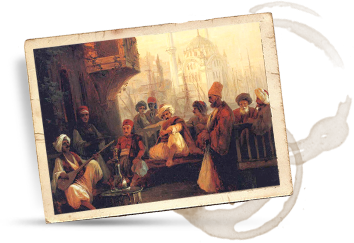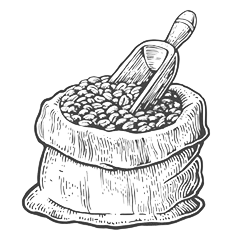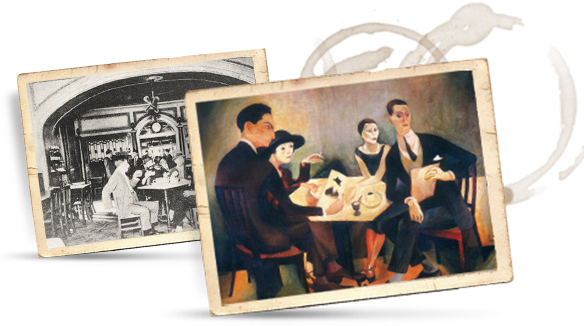

A primeira referência que se conhece do aparecimento da planta do café é relativa ao pastor Kaldi que vivia na região do nordeste de África. Certo dia, pastava o seu rebanho quando observou um comportamento estranho nos seus animais. As cabras apresentavam-se mais agitadas e conseguiam percorrer grandes distâncias sempre com grande energia.
Surpreendido, tentou perceber a razão daquele acontecimento. Algum tempo passou até chegar à conclusão que o comportamento das suas cabras se devia à ingestão de alguns frutos de cor avermelhada. Admirado, Kaldi resolveu experimentar e comprovou o efeito estimulante que tais frutos surtiam.
O povo da Etiópia consumia inicialmente a cereja do café no seu estado original. Surgiram algumas transformações na forma de consumo, sendo por vezes macerada ou misturando com banha para alimentação. Da fermentação do suco da cereja produziam uma bebida alcoólica, ou preparavam chá com recurso às folhas.
A planta do café teve origem em África, no entanto coube aos árabes o domínio da técnica de plantação e preparação do produto. O café conforme o conhecemos terá sido difundido a partir de 1450 em Constantinopla.


Veneza, centro difusor de produtos finos, especiarias e artigos de luxo , foi em 1615 a porta de entrada do produto na Europa. Nesta fase já era conhecida a prática da Torrefação e moagem do café.

De Itália passou para França e daí para a Guiana Francesa.
O modelo de cafeteria, como ponto de encontro e local de convívio social, vingou pelo mundo fora.
A Inglaterra foi o primeiro país a cultivar o hábito dos Cafés públicos. Em 1650, foi aberto em Oxford um dos primeiros pontos-de-venda. Na sua maioria, os Cafés ingleses impulsionaram convívios diversos, tornando-se em locais de discussões filosóficas e políticas.
No entanto, foi em França que se eternizou o modelo de espaço lúdico, através dos charmosos Cafés parisienses, que celebravam o convívio informal da população.
Em 1688, foi aberto o mais famoso dos Cafés parisienses – o Café Procope. Fundado por Procópio dei Coltelli, é considerado o mais antigo do mundo ainda em atividade.

O português Francisco de Melo Palheta recebeu da mulher do governador da Guiana Francesa uns pés de café e assim introduziu o café no Brasil em 1727.
No decorrer do sec. XVIII apareceram em Portugal os primeiros cafés públicos que se tornaram em espaços de animação cultural e artística à semelhança do que se passava em França.
Nos séc. XIX e XX em Portugal os cafés tiveram uma grande importância social. Os pensadores da época reuniam-se para debater questões políticas, sociais, económicas e de todo o género. A realização de tertúlias nestes espaços eram hábitos dos intelectuais e grandes escritores portugueses como Fernando Pessoa, Almeida Garrett, Alexandre Herculano, Camilo Castelo-Branco, Eça de Queiroz entre outros.
Atualmente o café tem vindo a aprofundar raízes na sociedade portuguesa. Para além do hábito social que justifica o convívio, os portugueses introduziram o hábito de tomar café nas suas próprias casas, diversificando os formatos e hábitos de consumo.






